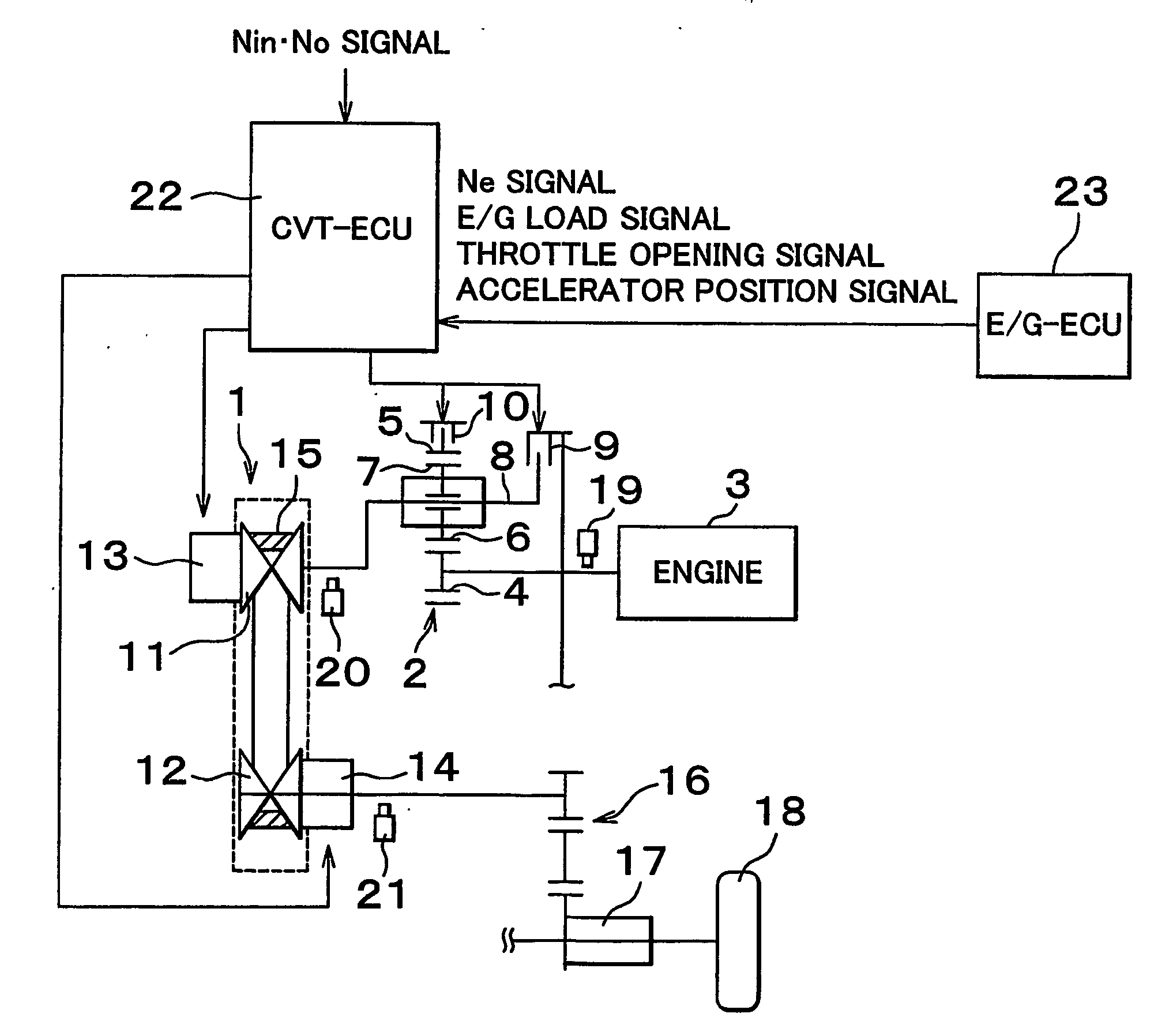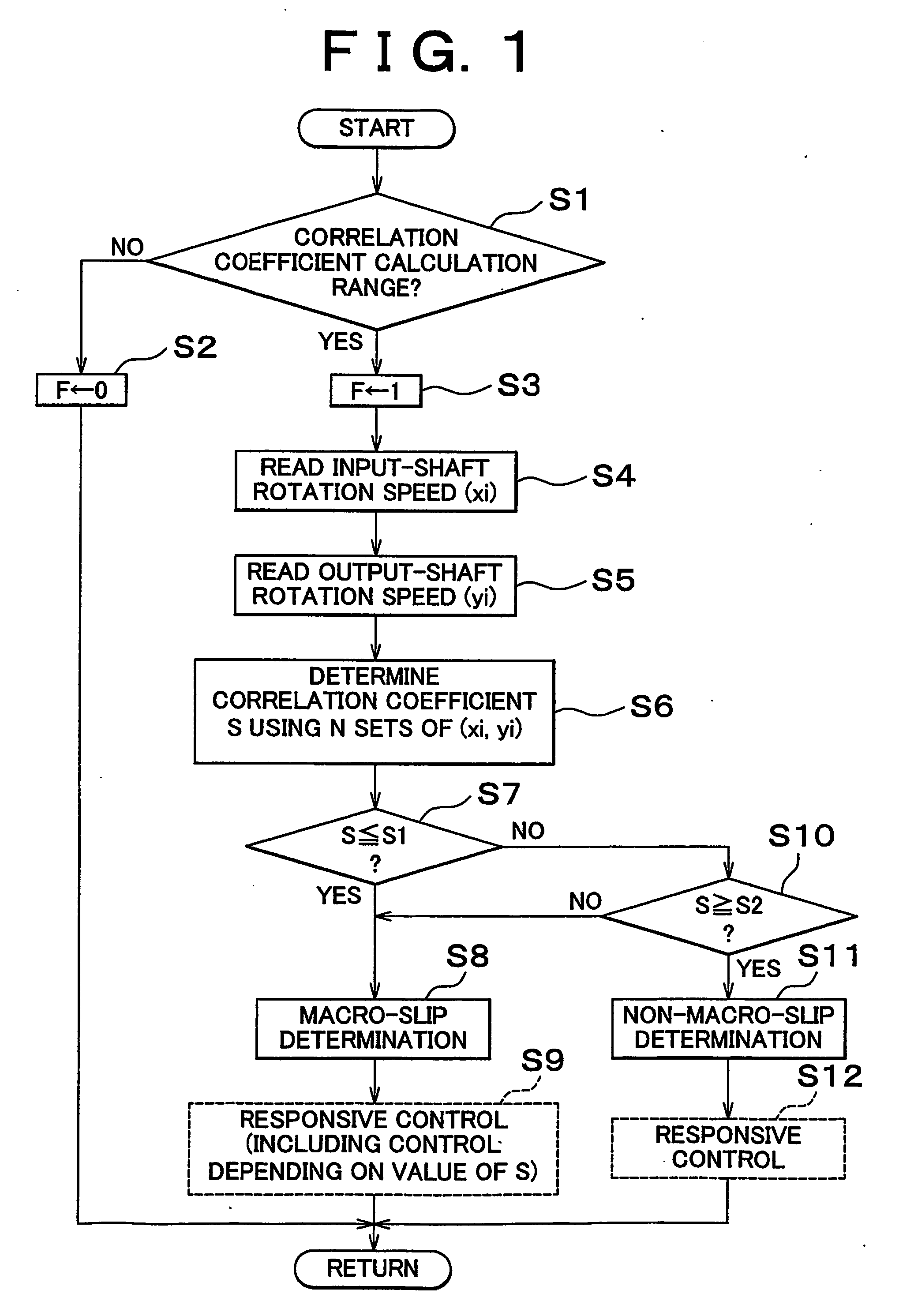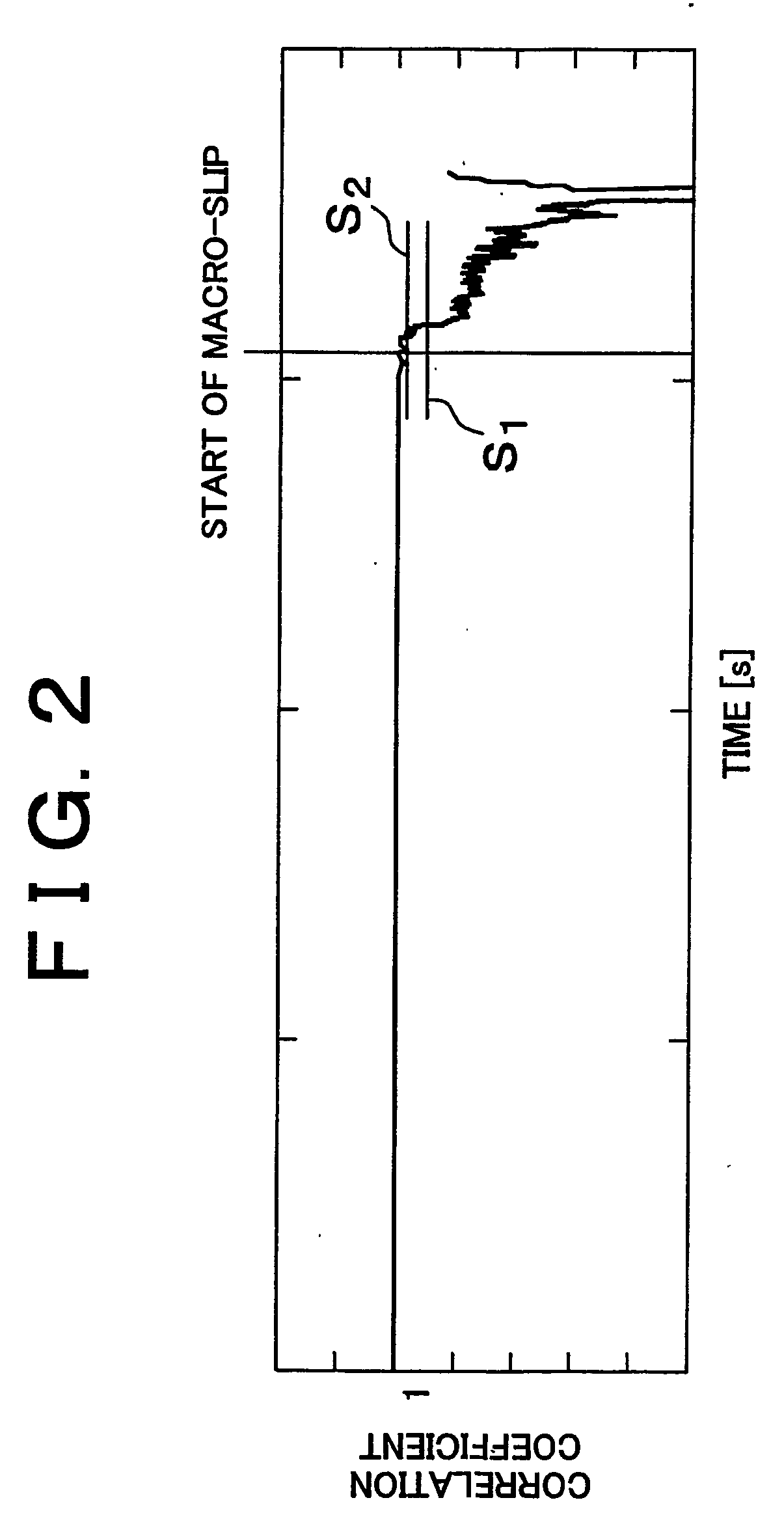Slippage detection system and method for continously variable transmutations
a detection system and transmutation technology, applied in the direction of gearing, instruments, hoisting equipment, etc., can solve the problems of limiting the strength of constituent parts or elements of the cvt, such as belts, pulleys, disks, etc., and avoiding erroneous determination of slippage
- Summary
- Abstract
- Description
- Claims
- Application Information
AI Technical Summary
Benefits of technology
Problems solved by technology
Method used
Image
Examples
Embodiment Construction
[0036] Some exemplary embodiments of the invention will be described in detail. First, a drive system and a control system of a motor vehicle to which the invention is applied will be described with reference to FIG. 14. FIG. 14 schematically shows a drive system including a belt-type continuously variable transmission (CVT) 1 as a transmission. The CVT 1 is coupled to a power source 3 via a forward / reverse-drive switching mechanism 2.
[0037] The power source 3 is a drive unit for generating power to run the vehicle, and is provided by an internal combustion engine, a combination of an internal combustion engine and an electric motor, an electric motor, or the like. In this embodiment, the power source 3 takes the form of an engine. The forward / reverse-drive switching mechanism 2 is employed since the engine 3 can rotate only in one direction, and is arranged to output the input torque as it is or in a reverse direction.
[0038] In the example shown in FIG. 14, a double-pinion type p...
PUM
 Login to View More
Login to View More Abstract
Description
Claims
Application Information
 Login to View More
Login to View More - Generate Ideas
- Intellectual Property
- Life Sciences
- Materials
- Tech Scout
- Unparalleled Data Quality
- Higher Quality Content
- 60% Fewer Hallucinations
Browse by: Latest US Patents, China's latest patents, Technical Efficacy Thesaurus, Application Domain, Technology Topic, Popular Technical Reports.
© 2025 PatSnap. All rights reserved.Legal|Privacy policy|Modern Slavery Act Transparency Statement|Sitemap|About US| Contact US: help@patsnap.com



